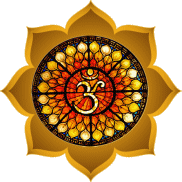The Ganges begins at the confluence of the Bhagirathi and Alaknanda rivers. The Bhagirathi is considered to be the true source in Hindu culture and mythology, although the Alaknanda is longer. The headwaters of the Alakananda are formed by snowmelt from such peaks as Nanda Devi, Trisul, and Kamet. The Bhagirathi rises at the foot of Gangotri Glacier, at Gaumukh, at an elevation of 3,892 m (12,769 ft).
History: The Late Harappan period, about 1900–1300 BCE, saw the spread of Harappan settlement eastward from the Indus River basin to the Ganges-Yamuna doab, although none crossed the Ganges to settle its eastern bank This river is the longest in India.During the early Vedic Age of the Rigveda, the Indus and the Sarasvati River were the major sacred rivers, not the Ganges. But the later three Vedas give much more importance to the Ganges. The Ganges is a sacred river along every fragment of her length. All along her course, Hindus bathe in her waters. All along her course, they pay homage to their ancestors and to their gods by cupping her water in their hands, lifting it and letting it fall back into her; they offer flowers and rose petals and float shallow clay dishes filled with oil and lit with wicks (diyas). On the journey back home from the Ganges, they carry small quantities of her water with them for use in rituals (Ganga jal, literally water of the Ganga). When a loved one dies, they return to the Ganges to consign the ashes to her custody.
Our Holy River Ganga : Ganga Aarti
The Varanasi Ganga Aarti takes place every sunset at holy Dasaswamedh Ghat, near Kashi Vishwanath Temple. It differs from the aartis at Haridwar and Rishikesh in that it's a highly choreographed ceremony. Although a spectacular must-see, some people consider it to be too much of an artificial and showy extravaganza to have a lot of meaning in a spiritual context. The aarti is performed on a stage by a group of young pandits, all draped in saffron colored robes with their puja plates spread out before them. It commences with the blowing of a conch shell, and continues with the waving of incense sticks in elaborate patterns and circling of large flaming lamps that create a bright hue against the darkened sky. The movement of the lamps, held in the pandits' hands, is tightly synchronizing to the rhythmic chants of hymns and clang of cymbals. The heady scent of sandalwood thickly permeates the air.
Ghats of Holy River Ganga :
Ghats in Varanasi are an integral complimentary to the concept of divinity represented in physical,
metaphysical and supernatural elements. All the ghats are locations on “the divine cosmic road,” indicative of “its manifest transcendental dimension.” Varanasi has at least 84 ghats. Steps in the ghats (ghats are embankments made in steps of stone slabs along the river bank where pilgrims perform ritual ablutions) lead to the banks of River Ganges, including the Dashashwamedh Ghat, the Manikarnika Ghat, the Panchganga Ghat and the Harishchandra Ghat (where Hindus cremate their dead). Many ghats are associated with legends and several are now privately owned. Many of the ghats were built when the city was under Maratha control. Marathas, Shindes (Scindias), Holkars, Bhonsles, and Peshwas stand out as patrons of present-day Varanasi. Most of the ghats are bathing ghats, while others are used as cremation sites. Morning boat ride on the Ganges across the ghats is a popular visitors attraction. The miles and miles of ghats makes for the lovely river front with multitude of shrines, temples and palaces built "tier on tier above the water’s edge".
The Dashashwamedh Ghat is the main and probably the oldest ghat of Varansi located on the Ganges, close to the Kashi Vishwanath Temple. It is believed that the god Brahma created it to welcome Shiva and he also sacrificed ten horses during Dasa -Ashwamedha yajna performed here. Above the ghat and close to it, there are also temples dedicated to Sulatankesvara, Brahmesvara, Varahesvara, Abhaya Vinayaka, Ganga (the Ganges), and Bandi Devi which are part of important pilgrimage journeys. A group of priests perform "Agni Pooja" (Worship to Fire) daily in the evening at this ghat as a dedication to Shiva, Ganga, Surya (Sun), Agni (Fire), and the whole universe. Special aartis are held on Tuesdays and on religious festivals.
The Manikarnika Ghat is the Mahasmasana (meaning: "great cremation ground") and is the primary site for Hindu cremation in the city. Adjoining the ghat, there are raised platforms that are used for death anniversary rituals. It is said that an ear-ring (Manikarnika) of Shiva or his wife Sati fell here. According to a myth related to the Tarakesvara Temple, a Shiva temple at the ghat, Shiva whispers the Taraka mantra ("Prayer of the crossing") in the ear of the dead. Fourth-century Gupta period inscriptions mention this ghat. However, the current ghat as a permanent river side embankment was built in the 1302 and has been renovated at least thrice..

















